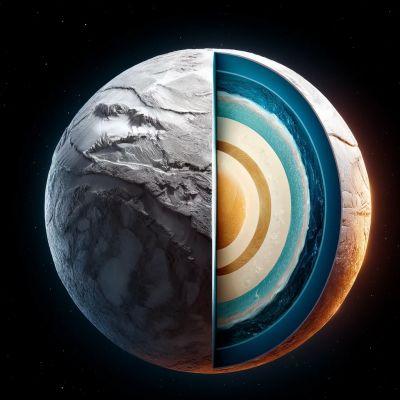
Exploring the Hidden Oceans: Dwarf Planets Beyond Pluto and the Quest for Life
Far beyond the familiar planets of our solar system lies a mysterious realm of dwarf planets, like Pluto and its distant cousins. These celestial bodies, residing in the cold, dark expanse of space, might hold the key to one of humanity's greatest questions: Are we alone in the universe? Scientists believe that there may be liquid oceans in dwarf planets beneath their icy surfaces, potentially creating habitats where unknown life could exist.
The Mystery Beneath the Ice
Dwarf planets beyond Pluto, such as Eris, Haumea, and Makemake, are intriguing to scientists because of their potential to host subsurface oceans. Despite the freezing temperatures in these distant reaches of our solar system, radioactive decay and gravitational interactions with other celestial bodies could generate enough heat to keep water in liquid form beneath their icy crusts. This phenomenon is similar to what is believed to occur on Jupiter's moon Europa and Saturn's moon Enceladus, where subsurface oceans are thought to exist.
Implications for Life in Liquid Oceans in Dwarf Planets
The presence of liquid water is a tantalizing hint at the potential for life. On Earth, wherever we find water, we find life. If dwarf planets beyond Pluto have oceans beneath their surfaces, they could offer the right conditions for life to emerge or exist. This doesn't necessarily mean we'd find fish or sea creatures as we know them swimming in these extraterrestrial seas. Instead, life, if it exists there, might be in forms we can barely imagine—microbial organisms adapted to extreme conditions.
A Wider Perspective on Habitability
The possibility of oceans on dwarf planets challenges our understanding of where life can thrive. It suggests that life might not be limited to planets in the "habitable zone" around stars, where conditions are right for liquid water on the surface. Instead, life could be hiding in the darkness of space, beneath the ice of distant worlds. This expands the potential habitable real estate in the universe and increases the likelihood that life, in some form, is more abundant than previously thought.
Conclusion
The exploration of dwarf planets beyond Pluto is not just a quest to map the unknown. It's a journey that could redefine our place in the cosmos. If we discover that these distant, icy worlds harbor oceans—and possibly life—it would be a profound reminder that the universe is full of surprises, and that life might find a way to exist in the most unexpected places.
Source: Southwest Research Institute
